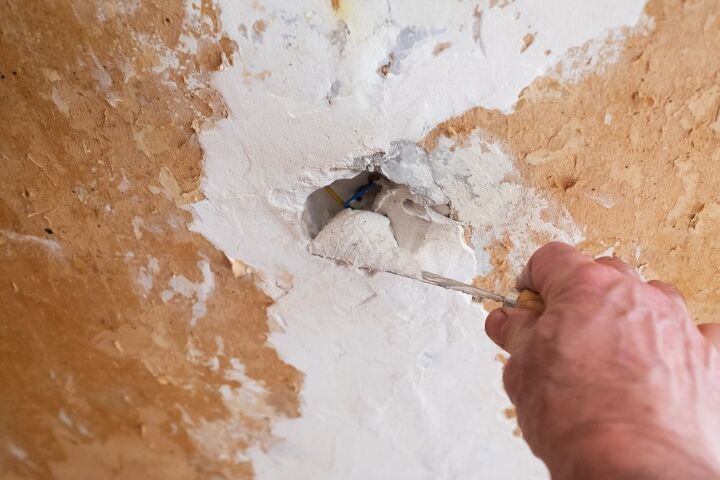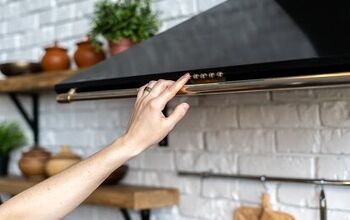Plaster of Paris Vs Spackle: Which One Is Better?

So, you’ve got a hole in your wall, and you need to repair it? Don’t worry. We won’t ask how it happened. You need to know what the best repair compound will be for this little project. There’s plenty to choose from, but you’ve landed between Plaster of Paris or Spackle.
The answer when choosing between Plaster of Paris and Spackle lies in how extensive the repair will be. By identifying the aspects of damage, you’ll be able to choose. For lighter repairs like scratches, you’ll be better off using spackle. On the other hand, for more extensive repairs like holes in your wall, you’ll want to use Plaster of Paris.
Do You Need Drywall Repair Services?
Get free, zero-commitment quotes from pro contractors near you.

Wall Repairing Compounds
It’s no secret that there are a ton of products to choose from when it comes to repairing walls. There’s probably a whole section dedicated to it in your local home improvement store.
As a beginner, it’ll be hard to understand the differences between most of them. The key differences in them usually have to deal with their drying time, and what type of walls they should be used on.
Of course, if you’re looking at this article, you already have a good idea of what you want, but it doesn’t hurt to know if you grabbed the wrong product for your wall. Get out your note pad as we go over the general wall repairing compounds.
Hot Mud
Hot mud is bought as a powder. When you mix it with water, it begins hardening right away. The setting time will depend on who you buy the product from (brand wise). The time for hot mud to set can be between 10 minutes and an hour.
That range should show you that if you want the repair over quickly, don’t cheap out; however, If you’re patient, then it won’t matter. Experts in drywall use hot mud because it makes strong joints, making your wall stronger than it was before.
All-Purpose Joint Compound
All-purpose joint compound is the least beginner-friendly as far as time goes, but as far as everything else goes, it’s easy. This compound comes mixed in a tub, and they can be bought in various sizes. Do you need to repair a drywall dent that only you can see? Buy a 1-gallon tub and save the rest for when you run into a more significant issue.
You can use the product for anything like the name says. As previously stated, it’s beginner-friendly everywhere but the drying process. It’s not something you have to watch dry, but if you have children or dogs in your home, then you may have a new job of keeping them away from it because it takes 6 to 12 hours to dry. The drying depends on the humidity and the brand of the product.
Topping Compound
Topping compound is an all-purpose joint compound, except it’s lighter in terms of weight. This is compound professionals love to use on the final layer to top off. If you have a textured wall, then this compound may be your best bet. It would be best not to use this on a smooth wall because it’s meant to be textured, and it dries fast.
Fast Drying Compounds
There’s nothing like living with animals or children that have to constantly be watched when a dangerous material is out in the open. Creatures are curious, and they don’t know how dangerous it can be to mess with chemicals.
Plaster of Paris, Patching Compound, and spackle are great for people that just want the hole in their wall to be patched as soon as possible. You can’t just pick one without knowing what they are for; otherwise, you may end up picking the wrong compound for the job.
Patching Compound
Patching compound is a versatile, fast-drying wall repair solution. It works on wood, plaster, and concrete walls. It can also be used to level subfloors. With a drying time around twenty minutes, you won’t have to sit around and do nothing. The compound is coarse, so it’s not good for wall repairs unless it’s covered with something else like a joint compound.
Plaster of Paris
Plaster of Paris is best for patching holes. It works best on plaster walls because the texture is similar. Plaster of Paris is rarely used on anything but plaster walls. For big repairs, this will be your best bet.
Spackle
While you may use Plaster of Paris on big repairs, you’ll want to use spackle on smaller repairs. Plaster can be used on the top layer of a wall. Spackle, on the other hand, is used to repair holes and cracks. Spackle takes about two hours to dry, but this all depends on the quality and type of spackle you buy.
Organic spackle is what the name says: organic. It’s made of raw materials. It’s spackle that isn’t mixed with chemicals to bind it together. Mixed spackle is made of different materials. The mixture makes it easier for the spackle to adhere to the wall for a longer time.
Can You Use Plaster of Paris In Place of Spackle?
Now that you know which to use in terms of Plaster of Paris or spackle, it’s time to understand the limitations of them. If you’re into stretching the use of your Plaster of Paris, then you’ll be happy to know that you can use it in the place of spackle.
Let’s say you have a hole in your wall and you go and buy Plaster of Paris to repair it. Next thing you know, the repairs are done, and a week later, you need to fix a tiny hole from something like a nail. It would be much easier to use spackle, but you could use your Plaster of Paris instead and save money by using what you have.
Using Plaster of Paris instead of spackle does have tradeoffs. There’s a risk that the plaster will shrink, requiring you to coat it multiple times. That could make the whole repair take much longer than it usually would.
You Can’t Use Spackle For Big Repairs
We’ve learned that you can use plaster for a spackle job, but can you use it the other way around? The quick answer is no. A larger repair, using spackle, would be like trying to build an oil rig with just a hammer. It may be possible, but it won’t look good. Spackle is a lightweight formula, so it’s a compound only suitable for small hole repairs.
Other Tips When Repairing A Wall
Here are some things to keep in mind when repairing a wall.
- Make sure you seal the tub or container that has your spackle or Plaster of Paris in it. If your product is not in use, then cover it. Compounds for wall repairs dry out fast when exposed to air, so you’ll want to make sure you don’t leave them exposed. Think about it like sealing a paint can.
- Pay attention to the warning labels on your repair compounds. Most compounds come from materials in nature, but some (based on brand) are mixed with chemicals. Check the warnings to see the dangers of exposing yourself to the repair compound. Figure out what to do if you breathe it in or get any on your skin.
Do You Need Drywall Repair Services?
Get free, zero-commitment quotes from pro contractors near you.

Wrapping It Up
The difference between spackle and Plaster of Paris is easy. Just remember the longer word is for larger repairs, and the shorter word is for smaller repairs. Hopefully, this has given you a better idea of what compound will work best on your wall.

We are a team of passionate homeowners, home improvement pros, and DIY enthusiasts who enjoy sharing home improvement, housekeeping, decorating, and more with other homeowners! Whether you're looking for a step-by-step guide on fixing an appliance or the cost of installing a fence, we've here to help.
More by Upgraded Home Team



























